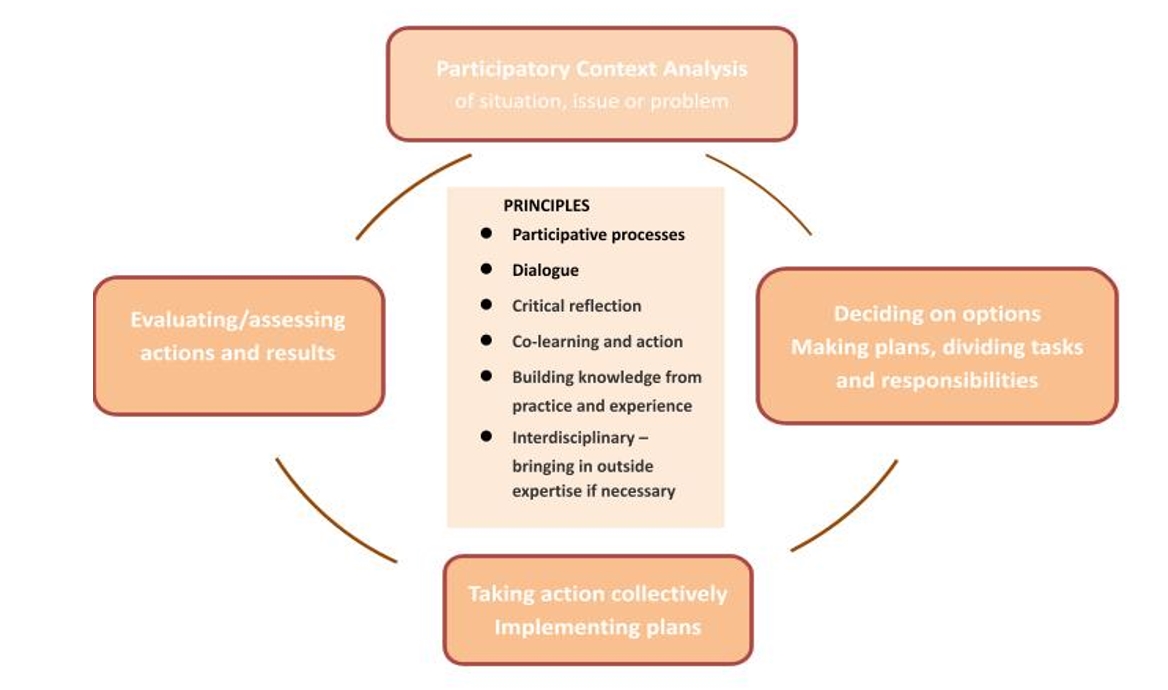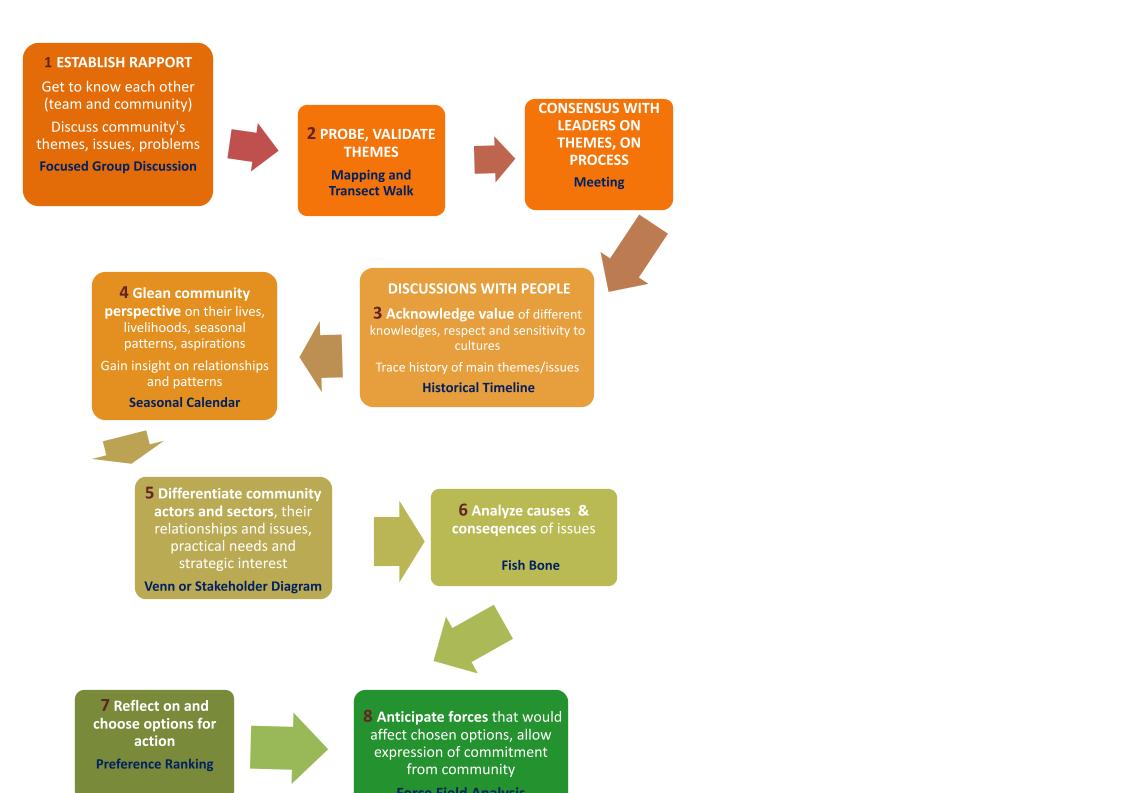The concepts and tools of Participatory Action Research (PAR) are used to guide people in exploring and sharing their knowledge of life and local conditions, in making decisions, and in planning and carrying out actions to effect change within their communities. Local or external facilitators can adapt these tools to guide the people in their analysis, decision-making and action.
The fundamental idea of PAR is that communities are supported to analyze their own situation, make decisions about how to best tackle their problems, and, as a result, feel empowered to take action. Those affected by the problem undergo a cyclical process of fact finding, action, reflection, leading to further inquiry and action for change. Emphasis is placed in dialoguing, critical reflection, co-learning and action to implement change.
Participatory Action Research:
- Is always a process, never an event
- Involves using a range of tools rather than just one, thus allowing methods to be adapted to suit the issue or audience
- Places an emphasis on using highly visual tools (such as maps, spider diagrams and charts, thus allowing everyone to easily participate)
- Is an interactive, rather than extractive process
- Aims to put local people at the heart of the community planning process. This approach seeks to maximize the use of local and traditional knowledge and strengthen local knowledge systems.
- Empowers communities by recognizing the value of their own knowledge and strengthening their capacity to produce knowledge that is useful to themselves and to others, such as governments.

PARTICIPATORY ACTION RESEARCH (PAR) is the Cycle of Continuous Learning or ACTION-REFLECTION-ACTION.


